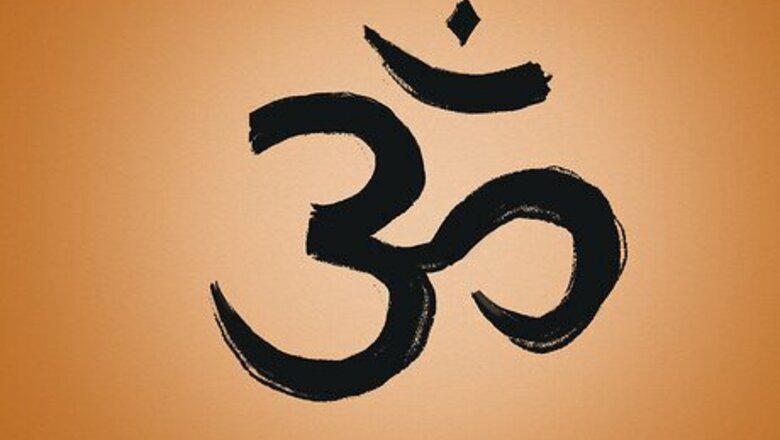
views
40 Important Hindu Symbols
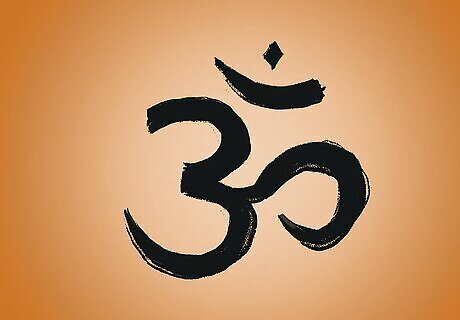
Om or Aum The om or aum symbol is believed to contain all things, making it the most important symbol in Hinduism. The symbol contains three syllables (a, u, and m) that are vocalized, moving from the through to the lips. In Hinduism, the intonation of this sound is thought to be the same sound through which the universe was created. The three sounds can be used to symbolize many different things, most commonly the three states of consciousness: waking, dreaming, and deep sleep. In this interpretation, the symbol as a whole represents spiritual self-awareness. Aum is often chanted at the beginning of prayers, mantras, and rituals.
Swastika The swastika or manji has been used throughout many historic cultures and religions to symbolize well-being, good fortune, and prosperity. As the second-most important symbol in Hinduism, the swastika is commonly drawn on ceremonial objects, temple walls, and the bodies of devotees. The swastika was adopted in mainstream Western culture during the early 1900s when it became a common symbol of good luck. However, the swastika’s popular usage ended after the Nazi party appropriated it during World War II. Today, much of the Western world sees the swastika as a symbol of alt-right fascism associated with Hitler’s Germany.
Hands in prayer Also known as the Namaste hand position, the Hindu Namaskar, and the Anjali Mudra, this symbol is used as a greeting between followers of Hinduism. In accordance with this sacred gestural symbol, Hindu people greet each other by pressing their palms together and holding them vertically near the chest. This gesture is often coupled with a slight bow of the head while saying namaste, which means “I bow to you.” The gesture symbolizes an offer of respect from the soul and the heart. Followers of Hindu may also use the Anjali Mudra when greeting a temple deity or holy person.
Lotus Blossom The lotus flower symbol, or padma, is used to represent the perfection of beauty. In nature, lotuses are rooted in mud but blossom into beautiful flowers, making them representative of purity and goodness. Lotuses are associated with many deities in Hinduism, including the wealth and purity goddess Lakshmi. Lotus blossoms also represent divinity as the pedestal on which deities sit or stand. These flowers may also symbolize detachment, which is an essential step on the path to moksha, or freedom from the cycle of life and death.
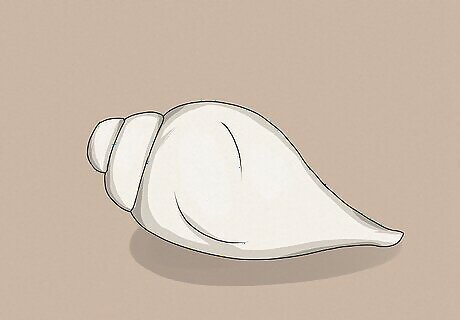
Conch In Hinduism, the sounding of the conch shell or Shankha symbolizes the sacred aum or om sound. The conch is often used as a symbol or musical instrument in Hindu rituals, usually to express longevity and prosperity. The Shankha is specifically associated with the deity Vishnu, who holds the conch to represent his role as the god of sound.
The Trishula or Trident The Trishula is a three-pointed trident or spear whose symbol is highly sacred in Hinduism. The deity Lord Shiva is often shown holding a trishula, which represents the three aspects of god: creation, protection, and destruction. According to Hindu beliefs, these three aspects of the trident encompass everything and everyone in the world. Each living being also has these three aspects inside them, and that internal balance is believed to be what defines someone’s character and life path.
The Naga or Cobra Snakes are a symbol of rebirth in Hindu cultures due to their ritual shedding of skin. The cobra, in particular, represents kundalini power, a type of cosmic energy believed to exist in every living thing. Two major Hindu deities, Lords Shiva and Vishnu, are often depicted with snake and cobra symbols.
Dhvaja The dhvaja is the saffron-orange colored flag flown above Hindu temples and during important festivals and processions. The dhvaja flag symbolizes the victory and triumph of the Dharma, with its warm, vibrant color emulating the sun’s life-giving rays. The flag is also meant to convey charity and safety to those who see it.
Nataraja or Dancing Shiva The nataraja symbol combines the Lord Shiva’s roles as creator, preserver, and destroyer of the universe while also conveying the Hindu concept of infinite cycles of time. The symbol depicts Shiva dancing within a flaming halo. In his hands, Shiva holds the hand drum that made the first sounds of creation (damaru) and the fire that will destroy the universe (agni). With his third hand, Shiva makes the gesture of fearlessness (abhayamudra). Shiva's remaining hand points to his raised left foot, which signifies refuge for troubled souls, while his other foot tramples a small human figure, representing illusion and trickery. Altogether, the details of this symbol imply that belief in Shiva can grant salvation to his devotees.
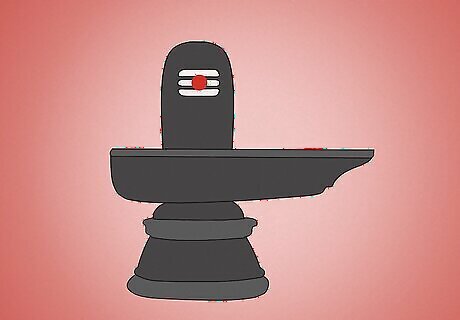
Shiva Linga The Shiva Linga or lingam symbol, sometimes called a shivling or ling, is a symbolic representation of Lord Shiva. Some Hindu followers believe that the lingam symbolizes the union between Lord Shiva and Yoni of Shakti, while others believe it represents the infinity of Shiva.
Vata or Banyan Tree The banyan is a sacred tree in Hinduism as well as being the national tree of India. Banyan trees can survive for centuries, and, as a result, they symbolize longevity in Hindu practices. The banyan tree is also representative of the shelter that gods give to their deities. Stories in Hindu mythology refer to banyan trees as Kalpavriksha, a tree that grants wishes and material wants.
Kaal-chakra The kalachakra, or the Wheel of Time, symbolizes the perfection of creation and the different cycles of existence. The eight spokes of the wheel symbolize the different directions, each of which is associated with a specific deity and meaning.
Tilak The tilak or tilaka is a mark worn on someone’s forehead, neck, hand, or chest. Male followers wear the tilak as a line or lines indicating their sect affiliation. Female followers wear the tilak in the form of a bindi dot. Bindis are small circular symbols drawn between the eyebrows of Hindu women. These red (for married women) or black (for unmarried women) symbols are believed to increase energy and concentration, as well as protect against evil spirits. The tilak may be worn on a daily basis, but it’s often reserved for important events or religious occasions. If a tilak is worn as three stripes on the forehead, this is called a tripundra. This symbol represents the three gunas, or attributes of nature.
Mayura Peacocks (mayura) and peacock feathers are widely-used symbols in Hinduism; they’re believed to bring good luck and prosperity. The peacock feathers are associated with many important deities, including Lord Krishna, Lord Vishnu, Lakshmi, and Karthikeya. Followers of Hinduism believe that mayura descended from the Garuda. This mythical bird served as Lord Vishnu’s mount.
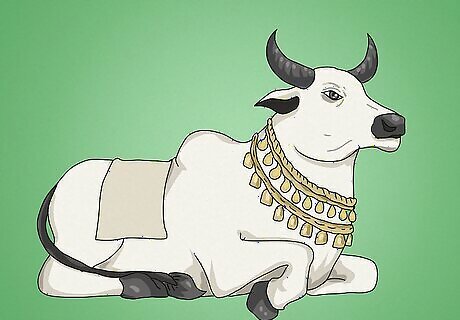
Nandi Nandi is the name of Lord Shiva’s mount or vahana, represented by a large white bull with a black tail. The name “Nandi” means “joyful,” and the bull is typically depicted kneeling at Shiva’s feet. Therefore, Nandi symbolizes the joy, strength, and discipline found in devotion and service to Lord Shiva.
Yantra The yantra is a geometric figure with mystical meanings connected to higher levels of consciousness. The pattern, which may be simple or complex, can be used for worship, meditation, and sacred adornment. One of the most popular yantras, the Sri Chakra Yantra, symbolizes feminine power, energy, and creativity.
Dharmachakra Also known as a dharma wheel, the dharmachakra is used in Hinduism to represent behaviors associated with rta, the universal order that makes life possible. It symbolizes Hinduism’s cosmic law, or dharma, that is upheld by the gods and followed by humans. The concept of dharma is also revered in other religions like Buddhism and Jainism.
The Mankolam Design The mankolam is a paisley design modeled after the shape of a mango. The design is closely connected to Lord Ganesha, who is sometimes portrayed as holding mango fruit. In its association with the deity, the mankolam symbolizes prosperity, attainable perfection, and fertility.
Cow The cow or go is the most sacred animal in Hinduism. Cows are connected to the crops and resources derived from the earth, therefore symbolizing good nature, purity, motherhood, and prosperity. The protection god Lord Krishna grew up as a cow herder, so he’s often depicted playing his flute among cows and milkmaids. Some Hindus believe that feeding a cow before eating their own breakfast is a sign of religious devotion.
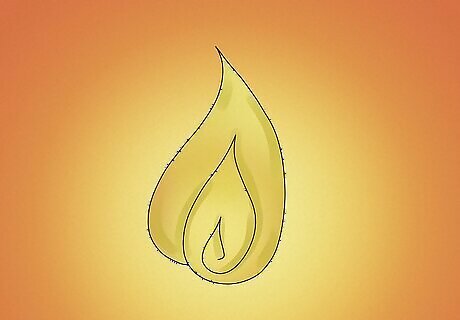
Fire Referred to as agni within Hindu practices, fire is used as a weapon as well as to make offerings. Lamps are often used in temples and altars to symbolize sacred light. These lamps are always lit near visual or symbolic representations of important deities. Fire is closely associated with the god Shiva, who’s often depicted with a lamp or fire in one hand. Agni is also the name of the Hindu fire god, who is tasked with personifying fire and delivering messages between humans and divine beings.
Pasha The pasha, or noose, is the means by which the divine brings souls to find truth and enlightenment. This tether-like symbol is closely associated with Yama, the Hindu god of death and Lord of the Underworld. Followers of Hinduism believe that Yama uses the Pasha to draw souls from the body at their time of death and carry them to the Underworld.
Bael Tree The bael tree is a medicinal, fruit-bearing tree that’s sacred in Hindu practices. Referred to as Sivadruma by Hindu devotees, the leaves of the tree are often offered to Lord Shiva. The trifoliate leaves of the bael are thought to symbolize Shiva’s trident or trishula.
Ankusha Ankusha is the name of the goad—an object used to drive cattle—that Lord Ganesha holds in his right hand. This goad is believed to remove obstacles that would prevent humans from following dharma, or Hindu law. It symbolizes perseverance and sacrifice on the road to spiritual enlightenment.
Shatkona The shatkona is a six-pointed star composed of two interlocking triangles. The flipped triangle represents prakriti, or female power, while the other symbolizes purusha, or male energy. This union creates Sanat Kumara, an important Hindu deity represented by this symbol.
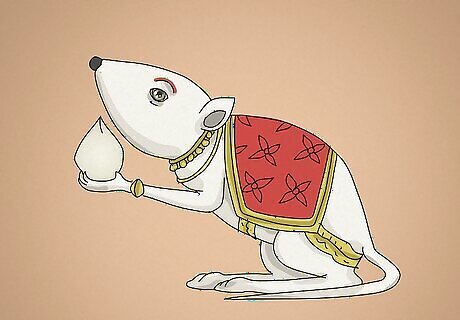
Mushika In general, mice symbolize familial abundance. Mushika, in particular, is the name of the mouse who serves as Ganesha’s mount, or vahana. The mouse is thought to represent Ganesha’s power to remove articles, as well as symbolizing speed, intelligence, and curiosity.
Konrai The konrai are a shower of golden blossoms associated with the Lord Shiva. The flowers represent the power and warmth of Shiva’s grace in the lives of his followers. The konrai blossoms appear in shrines and temples throughout India.
Ghanta The ghanta or bell in Hinduism is used in the puja ritual. The ringing of this sacred bell is thought to summon the gods and symbolize the infinite nature of the Hindu deities. Some believers also think that the ringing of the bell can activate the higher chakras of the body and drive away negative spirits and energies.
Gopura The gopuras are symbolic architectural ornaments used in Hindu temples throughout South India. These towering stone gateways are the door through which pilgrims enter the temple. The stones are often adorned with sculptures of different deities, and the multiple tiers of the arch symbolize the different planes of existence.
Kuthuvilakku The kuthuvilakku is a standing oil lamp often placed in temples or shrine rooms. Its soft light illuminates whatever room it’s placed in, maintaining a pure and serene atmosphere. Symbolically, the kuthuvilakku represents the awakening of divine light within each human and the consequent dispelling of ignorance. The kuthuvilakku lamp is commonly lit during grieving periods between when an individual has passed and when the anniversary ritual is held on the 31st day since the passing.
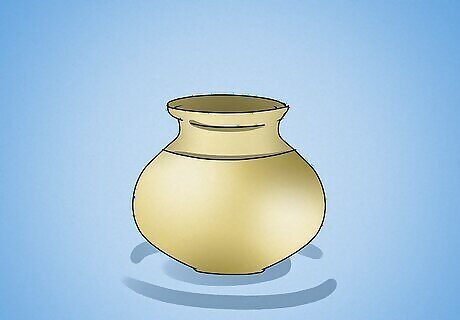
The Kalasha or Sacred Pot Ceremonial kalashas or water-filled vases play an important part in many Hindu rituals. In Hinduism, it is taught that the universe was once all water. The Earth emerged from this water and Brahma, the Creator god, carries this water in his kalasha.
Kamandalu The kamandalu is a water vessel carried by monastic followers of Hinduism. These individuals, known as sanyāsī, sādhu, or swāmi, carry the kamandalu to demonstrate freedom from material needs. The vessel therefore symbolizes devotion, austerity, and a commitment to god. The object is also sometimes held by Sarasvatī, a four-armed Hindu river goddess. In this portrayal, the kamandalu water vessel symbolizes abundance and immortality.
Tiruvadi The tiruvadi are sacred sandals worn by holy figures in the Hindu faith. These revered individuals forsake material goods to lead minimalist lifestyles, part of which is the wearing of these wooden sandals during a pilgrimage. The sandals themselves symbolize the holy feet of god. When Hindu people touch the feet of someone wearing tiruvadi, they are believed to be momentarily connected to god. Similarly, the feet of a holy guru or deity are referred to as “lotus feet.” Touching these feet demonstrates religious devotion and piety.
Trikona Triangles are an important motif in Hinduism, and the trikona is a triangular symbol that represents the multiple trinities in Hinduism. Most notably, the trikona represents the three aspects of Lord Shiva’s absolute form: the creator, preserver, and destroyer.
Vel Vel is the name of the holy lance carried by Lord Murugan, the Hindu god of war. The lance symbolizes Murugan’s protective power and safeguard against any challenges. The lance is commonly depicted with a wide, long, and sharp tip, representing its broad spiritual knowledge and indiscriminate power in removing bad karma and fear.
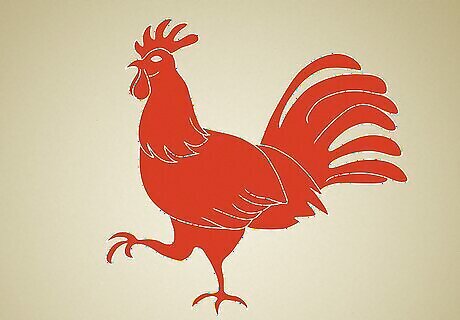
Red Rooster In Hindu mythology, the rooster is employed as the vahana or mount for the goddess Aditi—the mother of all gods. She is often depicted riding through the sky on a rooster, and roosters also appear in the symbolic war flags of Lord Karijeya and Skrihandi. In general, Hindu people view roosters as symbols of nobility, spiritual wisdom, and new beginnings.
Hamsa The hamsa, or swan, is believed to be the manifestation of the universe as a whole. The swan also represents the Lord Vishnu and serves as a mount for major deities like Saraswati and Shakti. In every form, the hamsa symbolizes purity, grace, and liberation from the cycle of birth and death.
The Rudraksha Seed The rudraksha is a small brown prayer bead believed to be the teardrop of Lord Shiva. According to Hindu lore, the tear was shed by Lord Shiva as he grieved the suffering of humanity. In modern practices, multiple seeds are typically strung together into a garland that provides protection and peace for its wearer.
Modaka Modakas are traditional Hindu sweets made of rice, coconut, sugar, and spices. The treat is small and round, about the size of a lemon. Lord Ganesha is believed to be especially fond of the modaka sweet, so it is often given as an offering when worshiping the god.
Sun Hindu followers view the Sun as a deity in itself, representing light and truth. Hindu people often offer water to the Sun after it rises. The Sun deity in Hinduism is called Surya, who possesses the power to dispel darkness, cure disease, and illuminate the world. Once a major fixture in Hindu ceremonies, Surya has several temples dedicated to him throughout India.
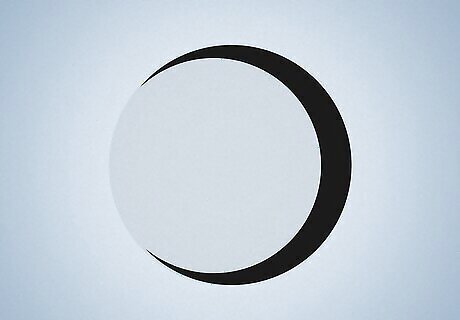
Moon Also known as Chandra, the moon in Hinduism rules over all emotions and watery realms. It is believed to speak to migrating souls that are seeking romance and kinship. The moon is an important motif throughout Hindu culture, and many significant events revolve around the lunar calendar, such as Diwali or the “festival of lights.”
Hindu Deities & Their Symbols
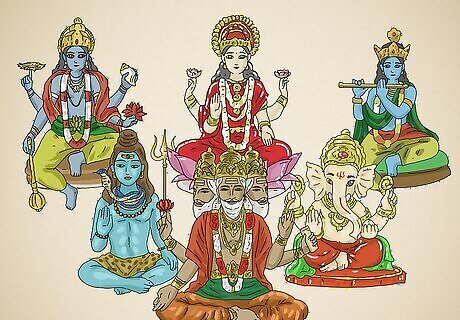
Each Hindu god or deity is associated with certain symbols. Hinduism is a poly-monotheistic religion with over 330 million deities, the most important of whom are Brahma (creation), Vishnu (protection), and Shiva (death). Each of these gods is often depicted with or represented by certain symbols, for example: Adi Parashakti: Supreme goddess in Shaktism. Symbols: Chariot of seven lions, Sri Chakra. Brahma: Creator god. Symbols: Lotus, swan, beaded garland (akshamala) Vishnu: Preserver god. Symbols: Chakra, lotus, the color blue. Shiva: Destroyer god. Symbols: Shiva Linga, third eye, trident. Saraswati: Goddess of learning and art. Symbols: White lotus, swan, peacock. Lakshmi: Goddess of love and fortune. Symbols: Red lotus, elephant, shower of gold. Parvati: Goddess of courage and fertility. Symbols: Lion, trident, chakra. Indra: King of the devas and Svarga. Symbols: Thunderbolt, rainbow, clouds. Varuna: God of duty, king of the waters. Symbols: Noose (pasha). Yama: King of the underworld. Symbols: Noose (pasha), buffalo. Surya: God of the sun. Symbols: Chariot, sun rays, the color gold. Kali: Manifestation of Parvati. Symbols: Trident, sword (khanda). Rama: Embodiment of righteousness. Symbols: Bow and arrow. Krishna: God of compassion, love, and yoga. Symbols: Cow, flute, peacock. Ganesha: God of wisdom and fortune. Symbols: Anjusha, mouse, aum. Murugan: God of war. Symbols: Peacock, rooster. Hanuman: God of strength and devotion. Symbols: Mace (gada).
Symbolic Rituals in Hinduism
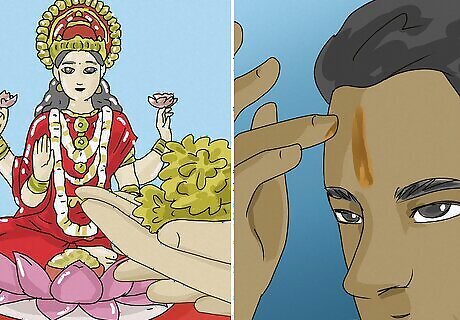
Symbolism includes physical acts and rituals as well as iconic images. In Hinduism, “symbolism” simply means that one object or action represents something else. Some important Hindu customs and rituals are considered “symbols” of the religion, such as: Pranam: A symbolic gesture where Hindu people lie flat at the feet of their parents, elders, teachers, and holy leaders. The elders then place their hand on or over the prone person’s head to give blessings. This practice is often done on special occasions and during festivals. Vibhuti: The name of a sacred ash applied to different parts of the body to summon and receive positive cosmic energy. Vibhuti is always applied with the ring finger and traditionally deposited on the space between eyebrows, the pit of the throat, the center of the chest, or just behind the earlobes. Havan: A havan or yagna, also known as a “fire offering,” is an integral part of Hindu worship. Devotees adorn their bodies with sacred religious symbols and make offerings to the fire in a hope to heal their hearts and connect with the divine spirit. Puja: Puja is the generic name for Hindu prayer and worship, in which followers offer to serve god and gain a sense of inner peace and quietude. Worship can be performed at home or in a temple, and it often involves a prayer performed in front of murtis or the image of a deity.
How Symbols Are Used in Hinduism
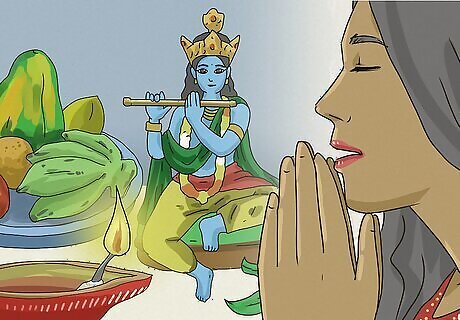
Hindu symbols are used in worship during prayers and rituals. Followers of Hindu believe that religious symbols embody the divine deities. During prayer or worship, Hindus will always be near to or in front of an important symbol or icon. Most Hindu families create a home shrine where they perform offerings and conduct their prayers. Shrines are usually small rooms or altars with pictures or statues of a deity. Families often worship together and perform their prayers in front of a sacred symbol three times a day. When praying in a Hindu temple, different parts of the building have different symbolic meanings. A worshiper may pray in a specific section of the temple to appeal to a certain deity—for example, one may worship Lord Shiva in the northeast corner of the temple or home. Temples will often have sacred emblems and Hindu symbols displayed throughout.
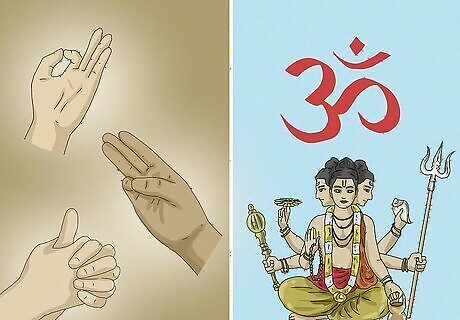
There are two categories of symbols in Hinduism: mudras and murti. Mudras symbols are hand gestures or body positions that carry religious significance, like the Anjali Mudra prayer hands. Murti symbols include icons, statues, and drawings, like the lotus blossom or om symbol. During worship, the murti associated with certain deities are used to express devotion and prayer. For example, someone may worship Ganesha with a statue of the god’s idol form. Mudras are used for a variety of purposes, including during meditation and religious ceremonies. Many devotees use mudras for healing and wellness. Performing mudras is believed to stimulate the flow of life force in the body, quiet the mind, and intensify the power of a religious or spiritual practice. Specific mudras are used for specific goals. The Shunya mudra, for example, which is performed by holding down the middle finger with the thumb, is believed to unlock the third eye chakra and promote mental clarity.


















Comments
0 comment